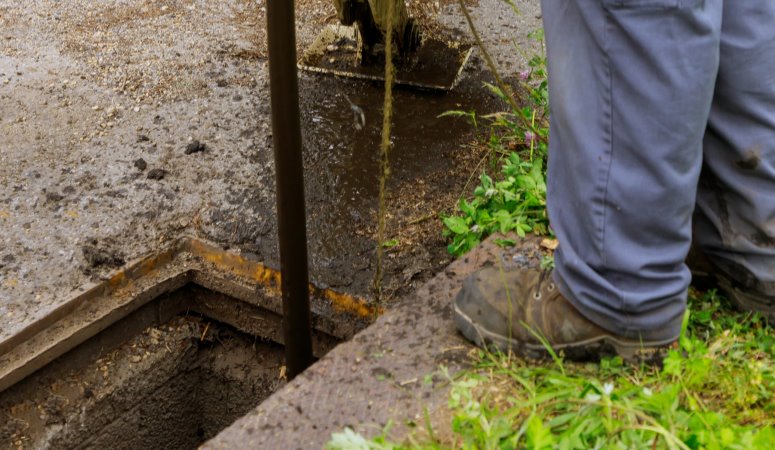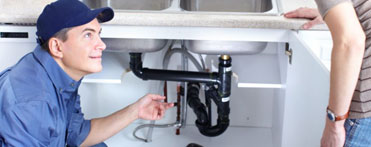
Drains are designed to guide waste water away from your property. If you know anything about drainage systems, you know that pouring fats, oils, grease, food solids and other waste down the drain is a bad idea. These wastes can not only clog your drains and the sewer lines but can also create problems at wastewater treatment facilities. It’s easy enough to avoid pouring these items down the drain in your home. It’s easy to control what goes down your drain. You can easily enforce proper disposal of waste in this environment. However, this isn’t as easy in commercial settings such as restaurants. This is where interceptors come into play.
Plumbing interceptors are devices that are installed in plumbing systems with the goal of capturing and separating different types of waste materials. These interceptors ‘intercept’ the waste before it enters the sewage system. Interceptors are designed to prevent different types of waste from causing blockages, backups and environmental contamination. These devices are used in commercial, industrial and institutional settings where specific types of waste can cause problems if they are allowed to flow into the sewer system freely.
Different jurisdictions have different regulations and building codes that dictate the installation and applications of plumbing interceptors. The regulations are set in place in order to prevent sewer system blockages, environmental disasters and public health concerns.
Interceptors are classified into different categories based on their function, design and the types of waste materials they are designed to capture and separate. The classification varies depending on the jurisdiction regulations as well as the type of standards being applied. Common classification used for interceptors is as follows:
Type 1 interceptors (grease interceptors)
These interceptors are also referred to as grease traps. They are designed to capture and separate fats, oils and grease (FOG). Many jurisdictions require commercial kitchens and food service establishments to have these devices installed in their drainage systems. They are a crucial element in preventing sewer blockages.
Type 2 Interceptors (mechanical grease interceptors)
These types of interceptors are designed to not only capture FOG but also smaller food particles and fine particulates. These interceptors are often fitted with mechanical components that may include filters or screens that aid in the separation of fine particulates.
Type 3 Interceptors (solids interceptors)
These types of interceptors are used to capture sediment, particles and any other solid debris in wastewater. They are designed to help prevent blockage of the sewer system. They are commonly used in areas where heavy solids are likely to be washed into the drainage system for example In industrial facilities or car wash bays.
Type 4 Interceptors (oil interceptors)
These are also known as oil-water separators. Oils such as those from garages are not only harmful to the environment but can also interfere with the treatment process at wastewater treatment facilities. These oils must be disposed of properly. These separators capture and separate hydrocarbons, oils and other hazardous liquids from waste water to prevent it from entering the sewer system.
Type 5 Interceptors (chemical interceptors)
These are designed to capture certain hazardous substances and chemicals. They are a crucial tool in preventing environmental contamination as well as public health concerns.
These are a type of interceptor used to capture and remove fats, oils and grease (FOG) from wastewater. They are a requirement in many jurisdictions for drainage systems coming from commercial kitchens and other food service establishments. Also known as grease traps, these interceptors are designed to prevent blockages, backups and environmental pollution.
Commercial interceptors work by allowing wastewater to flow through a series of compartments or baffles. The baffles work to slow the wastewater down. They may also be fitted with a flow control device. This device helps to regulate the volume of water entering the interceptor. It prevents excess water from flowing into the interceptor and disrupting the separation process.
As the wastewater flows through the interceptor, the FOG floats to the top. This results in the formation of a layer that is removed periodically. The rest of the waste water exits the interceptor through the outlet baffle.
Oil-Water Separators
These interceptors are designed to capture and separate oil, hydrocarbons and other hazardous liquids that occur in wastewater from industrial facilities and automotive facilities. These interceptors are vital for preventing environmental pollution. Like grease interceptors, oil-water separators have multiple baffles that are used to slow down the wastewater. The oils float to the top of the water and the water below flows out of the interceptor. The oils and hydrocarbons must be removed from the interceptor periodically in order to prevent it from overfilling. This is also to ensure compliance with local regulations.
Conclusion
Plumbing interceptors are a vital part of drainage systems. They help prevent blockages, backups and pollution. They are also a requirement of the law in many jurisdictions. If you’re considering the installation of an interceptor it is vital that you hire a plumber with a good understanding of local regulations as well as how to meet the specific requirements of your drainage system. Working with an experienced and skilled plumber will ensure the installation of an interceptor that is effective at separation.

With decades of experience, you'll get the job done right, the first time!